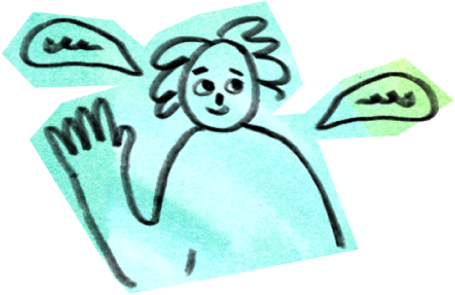Artist Statement
Tips for writing an artist statement, putting your artistic practice into words.
By Suzanne Mooney, Artist & Lecturer at The Academy of Fine Art, University of the Arts Helsinki
Tips for writing an artist statement, putting your artistic practice into words.
By Suzanne Mooney, Artist & Lecturer at The Academy of Fine Art, University of the Arts Helsinki

When you need to write about your artwork, solidifying a visual practice into words can feel inadequate. Writing has a specific structure that asks for certainty and clarity when these characteristics are not necessarily guiding the making or artistic processes. It might help to realize that an artist statement serves different functions in different contexts and an artist will write many versions over the course of their career. They evolve as the practice evolves.
As with most things in the Art world, there are some conventions (rather than rules) when writing an artist statement, so my advice is to read this text, use what you need and discard the rest.

Essentially an artist statement is a text that helps the reader understand an artists’ work and wider practice. It is a short piece of writing that expands an understanding of the artists’ interests, research, motivations, influences, and/or methods. It opens up what might not be apparent in the artwork itself and gives a deeper access into a thinking process, for example a reason why the artist uses a particular form or medium.
The process of writing an artist statement can help an artist clarify their own thoughts and ideas, to ‘say in their own words’ what they wish to be known about an artwork. Unlike other forms of art-writing, an artist statement should be a clear and concise text, using simple language and conventional sentence structure. This is because typically they are being read (by a gallerist or jury member) who needs to read many texts at one time. To be overly cryptic in this context just creates confusion.
Typically, an artist statement is required when applying for an open call or grant application. It is needed when writing a proposal for a commission, exhibition, a specific project, or residency. It can be included in a pdf or online portfolio, an artist’s own website and can form the basis of an exhibition press release. It is commonly asked for alongside a CV, Bio, project proposal, budget and/or image examples of artworks.

Artist statements are as varied as art practices. They are written by the artist themselves, therefore usually written in the first person “I” (but can be in the third person) The form and style of an artist statement should be guided by the work itself – if the artwork is expressive and driven by specific technique or materials, then that will be the focus of the statement. However, if the artworks are conceptual or research lead, then the text will perhaps expand on these themes, processes, and methodologies.
Most importantly, the statement should have the personality and individuality of the author.
Write in your own voice, expressing your interests, creativity, and passion. What makes sense for one artist, will not necessarily suit another. An artist statement can be different lengths, depending on specific requirements, but generally a few paragraphs (250 words) is enough.

Applying for opportunities can come up quick and fast, so it is useful to write about your work so when needed, the artist statement is ready to use. It is a ‘live’ document that is adapted, edited, and amended as required.
